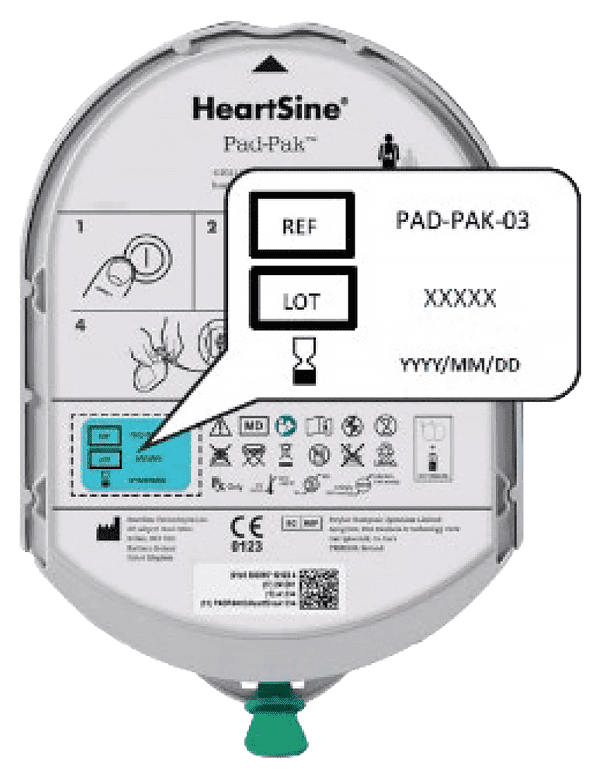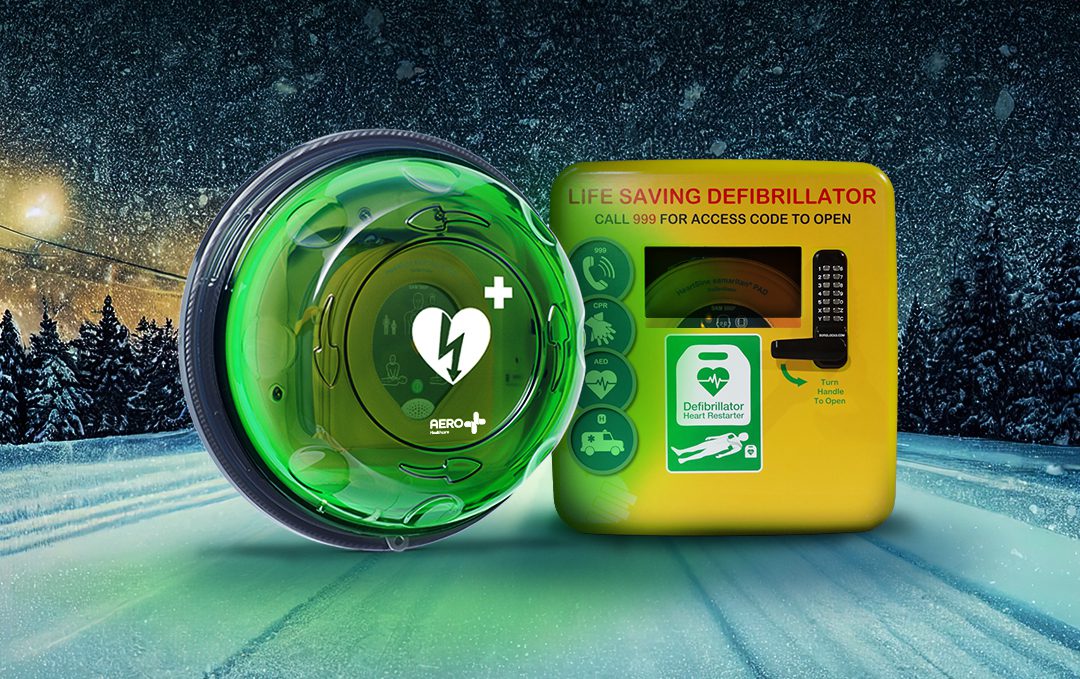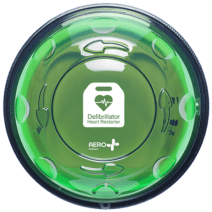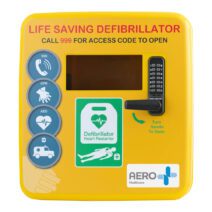How To Look After Your Defibrillator (AED)
While defibrillators, specifically Automated External Defibrillators (AEDs), are highly advanced pieces of technology, there is still some maintenance required to ensure the safety and functionality of your AED. Similarly, when taking good care of your AED, choosing the storage location and ensuring any portable AEDs are kept somewhere secure and warm when not in use is key to ensuring the longevity of your device.
Does A Defibrillator (AED) Require Maintenance?
Once you’ve purchased your AED, it’s important that you don’t just install it and then leave it without any further care. AEDs require regular maintenance checks, and even occasional part replacements to ensure they are always at full-functioning capacity.
While the hope is that you will never have to use a defibrillator, if you have an AED, it’s essential that it’s always kept in full working condition should the need to use it arise.
AED Maintenance Checks
As part of your first aid risk assessment, if you have an AED on-site, you should designate someone to be responsible for the maintenance and upkeep of your defibrillator. This means that they should log every time a defibrillator is serviced, making note of any parts that have been replaced, and any other tasks that have been carried out.
For all defibrillators, there will be no more than two parts that you will need to replace at interval, which is normally every four years, but this can change depending on the manufacturer. The regular maintenance tasks you will need to carry out are:
- Booking in your AED service with a manufacturer-recommend supplier to ensure that any system issues are dealt with, and to check that your AED is ready to go if needed.
- Replacing all parts after they expire, which can be ordered from your original supplier or manufacturer. Each expirable part will have an expiry date on, at which point they must be replaced.
- Check the status indicator on your AED on a weekly basis at least, if not more regularly. Many AEDs now come with remote monitoring systems that allow you to check these status indicators from a remote software.
- Making sure your AED is still accessible in an emergency. If you’ve installed new furniture, then it may not be as accessible as you think
At Aero Healthcare, our defibrillators come with innovative, built-in technology that will give users warning signs of any issues, and we recommend organisations check their devices weekly.
HeartSine products only have one replacement part, the Pad-Pak, which includes the battery and electrode pads. These need replacing every four years, or after each use.
Subject to terms and conditions, Aero Healthcare will replace your Pad-Pak for free after a genuine emergency as part of the Forward Hearts initiative.
You can download our AED maintenance checklist here:
AED Maintenance Checklist
Expiration of HeartSine AEDs and Parts
For HeartSine AEDs, there are two parts that can expire: the main unit and the Pad-Pak™.
The main AED unit needs replacing every eight years and the Pad-Pak™ needs replacing every four years, or after each use. All new HeartSine models are now installed with a Gateway, which allows for remote monitoring, including expiry dates and any operating issues.
How do I dispose of my HeartSine Pad-Pak™?
The Pad-Pak™ is a single-use accessory and must be replaced after use or when its expiry date has been exceeded. It may be disposed of in accordance with the instructions for the PAD unit, however, special consideration must be given to the battery and defibrillation electrodes contained within the device.
Battery – The Pad-Pak™ battery must be recycled separately in accordance with your national, regional and local regulations, or returned to the supplier or HeartSine for disposal.
Electrodes – When disposing of a used Pad-Pak™, the defibrillation electrodes may be contaminated with human bodily tissue, fluid or blood. The electrodes should be controlled and disposed of as infectious waste material. You will need to cut the electrode wires and dispose of this material in accordance with your national, regional and local regulations. If the Pad-Pak™ electrodes have not been used, they may be considered non-infectious waste.
Storing your Defibrillator (AED)
All AEDs require careful storage. Whilst AEDs are designed to be able to withstand some minor damage, the advanced technology inside means that they need to be protected when not in use to ensure the AED is always at full-working capacity.
In most situations, your AED should be stored in a designated locker that clearly indicates that it is an AED locker. Lockers can be external, designed for PADs (Public Access Defibrillators) through the use of lighting and clear visual instructions on what to do. You can also get alarmed external or internal lockers for defibrillators, which upon opening can be programmed to alert either a designated person, or the emergency services.
Defibrillators can also be stored in designated first aid bags, suiting those that work in sports or in remote locations such as farming or quarry work.
AEDs can be stored in a variety of ways, but it’s important that wherever you store your defibrillator, you alert any building users of its location, and include this in your risk assessments.
Care for Defibrillators (AEDs) Stored in a Car
For those who work in remote jobs, such as football coaching or on-the-road training providers, storing an AED in a car is a common occurrence. However, due to the ever-changing temperatures that a car experiences, you will need to store your AED in a temperature-controlled case or remove it from the car in extreme weather.

Care for Defibrillators (AEDs) Stored in Cold Weather
AEDs have operating level temperatures, and if the temperature falls outside of these, then the AED will not be at functioning capacity, and faults can occur.
Common operating ranges for most AEDs are between 0°C – 50°C, but this will vary from model to model. In the UK, we’ll rarely have temperatures above 30°C, although with climate change, this is becoming more of a concern. Keeping your AED cool can be as simple as placing it in a dark, cool cupboard when not in use, or ensuring that your external cabinet isn’t in direct sunlight all day.
If you store your defibrillator in a colder location, whether an unheated building, a car or similar, then you should be aware of the defibrillator’s operating temperatures and whether it needs to be moved to a more neutral location temporarily.
Aero Healthcare recommends the four following key tips for cold weather considerations for your AED:
- If your defibrillator has been stored at temperatures below operating level for any length of time, as soon as possible, move it into a heated room to ensure it’s fully-functioning if it’s needed.
- If you keep your defibrillator in a vehicle, wrap it in a thick garment, fleece or heavy foil blanket – this will help shield the AED from cold temperatures and help prevent temperature-related issues.
- If you do have to use an AED that was kept in cold temperatures and the pads are now cold or stiff – warm them between the palms of your hands until they loosen before applying to the patient’s chest.
- Whilst temperatures are extremely cold, it might be wise to check the status indicator of the AED to ensure the device is ready for use for the duration of extreme weather.
If you need to move the device into a warmer position, be sure to place a note in its original spot to let people know where it is and move it back once the cold weather has passed.

Looking For a Defibrillator Supplier with End-to-End Support?
Aero Healthcare focuses on providing the highest-quality products and support at every point of your journey, including training and installation. Get in touch with us today.




